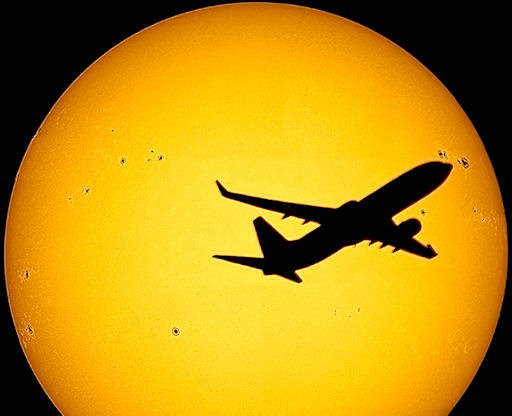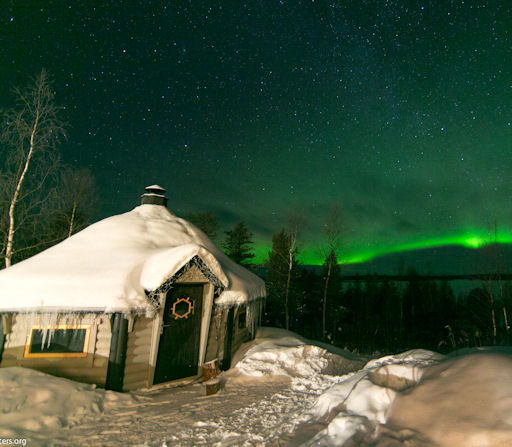VERY SPOTTED SUN: Solar activity is still relatively low, but the appearance of the sun suggests the quiet might not last. Over the weekend, a profusion of new sunspot groups peppered the solar disk with dark cores--each one a potential source of eruptions. NOAA forecasters estimate a 35% chance of M-class flares and a 5% chance of X-flares during the next 24 hours. Solar flare alerts: text, voice.
There are so many spots on the sun, even a jumbo jet cannot hide them:
Raffaello Lena took the picture on January 5 not far from the international airport in Rome, Italy. "An animation of the flyby is available here," he says.
Realtime Space Weather Photo Gallery
AURORA WATCH: "With solar activity being so low lately, you wouldn't expect many auroras. Yet here in Inari, Finland," reports Andy Keen, "we've had some wonderfully clear skies and excellent displays." He photographed this scene on Jan. 5th:
"The auroras became visible at approximately 16:00 hrs and lasted until midnight," he says.
More lights are in the offing. A solar wind stream is heading for Earth and it could spark polar auroras when it arrives on Jan. 8-9. NOAA forecasters estimate a 15% - 20% chance of geomagnetic storms.

![]()
Solar wind
speed: 352.7 km/sec
density: 9.2 protons/cm3
explanation | more data
Updated: Today at 1916 UT
![]()
X-ray Solar Flares
6-hr max: C1 1703 UT Jan06
24-hr: C3 0303 UT Jan06
explanation | more data
Updated: Today at: 1900 UT
![]()
![]()
![]()
Daily Sun: 06 Jan 13
![]()
![]()
Sunspots are popping up all over the solar disk. Credit: SDO/HMI
![]()
![]()
![]()
Sunspot number: 181
What is the sunspot number?
Updated 06 Jan 2013
Spotless Days
Current Stretch: 0 days
2012 total: 0 days (0%)
2011 total: 2 days (<1%)
2010 total: 51 days (14%)
2009 total: 260 days (71%)
Since 2004: 821 days
Typical Solar Min: 486 days
Update 06 Jan 2013
The Radio Sun
10.7 cm flux: 145 sfu
explanation | more data
Updated 06 Jan 2013
![]()
![]()
![]()
Current Auroral Oval:
![]()
Switch to: Europe, USA, New Zealand, Antarctica
Credit: NOAA/POES
![]()
![]()
![]()
Planetary K-index
Now: Kp= 1 quiet
24-hr max: Kp= 1 quiet
explanation | more data
![]()
Interplanetary Mag. Field
Btotal: 5.4 nT
Bz: 1.2 nT north
explanation | more data
Updated: Today at 1916 UT
![]()
![]()
![]()
Coronal Holes: 06 Jan 13
![]()
![]()
Solar wind flowing from this coronal hole should reach Earth on Jan. 8-9. Credit: SDO/AIA.






